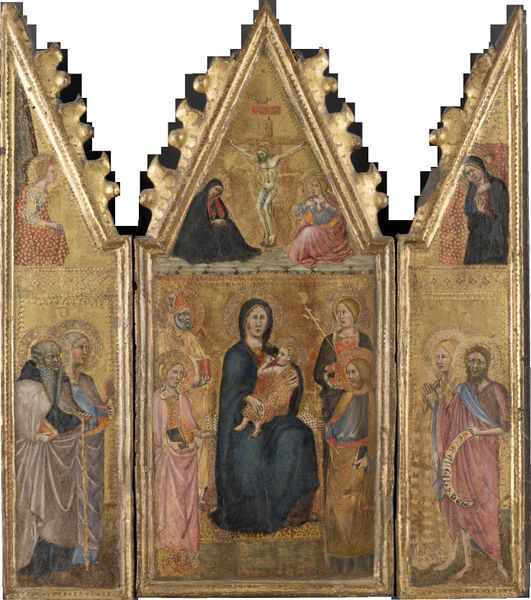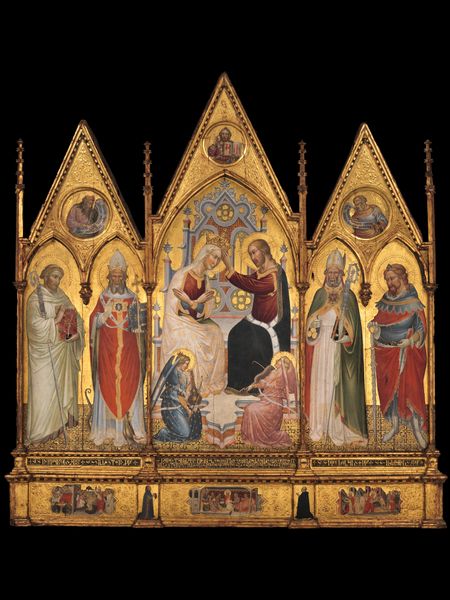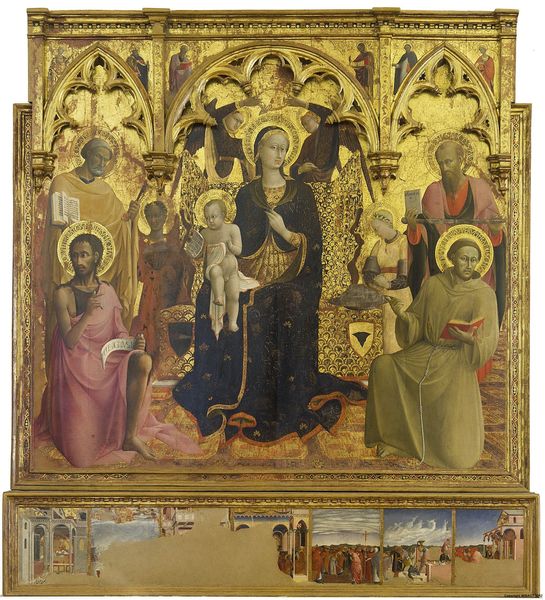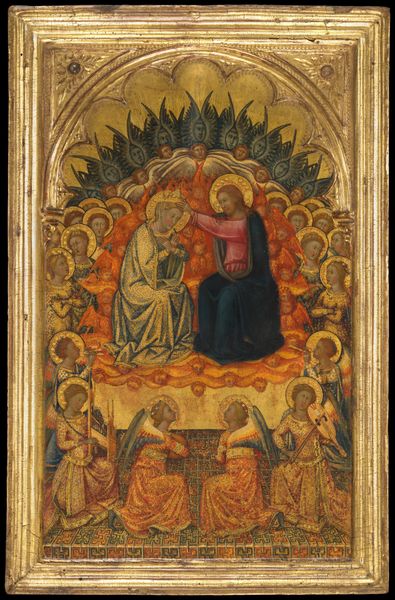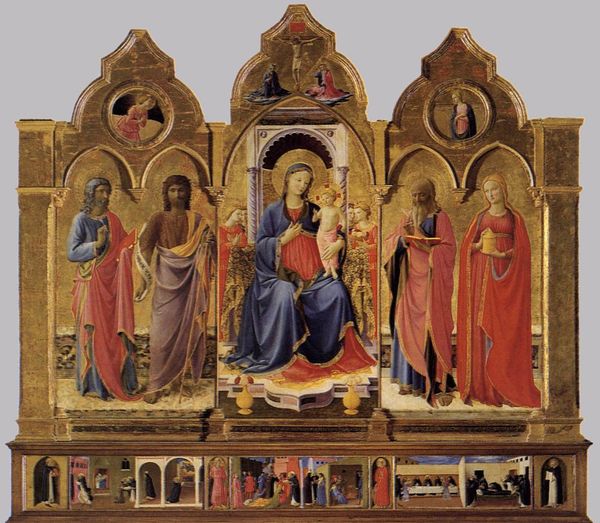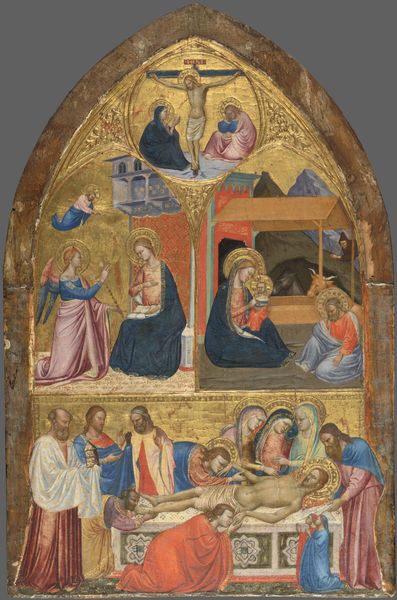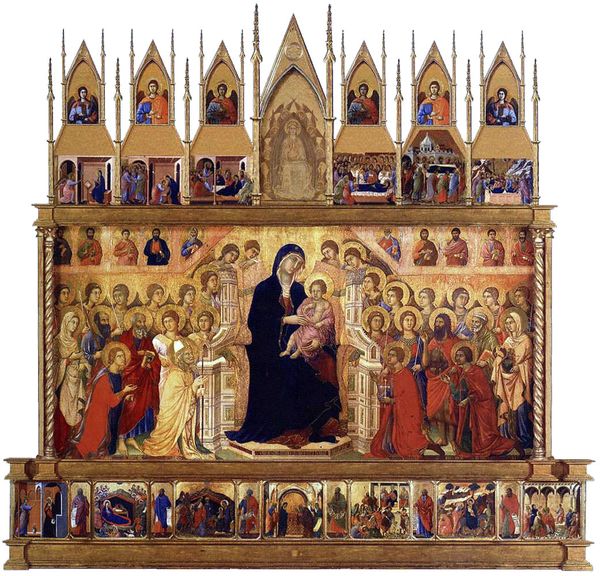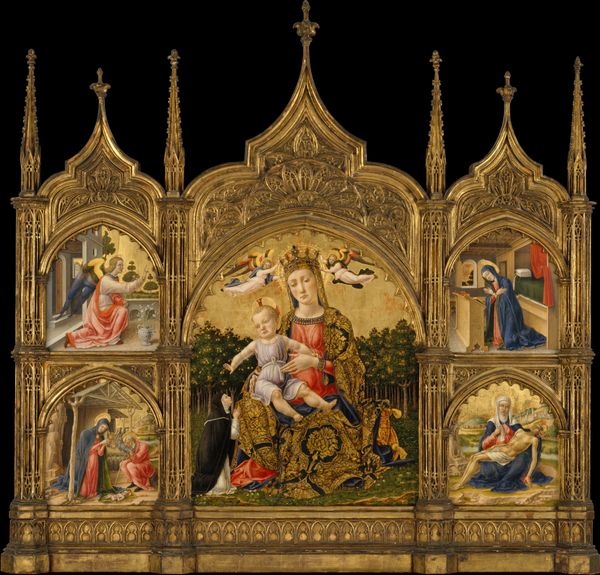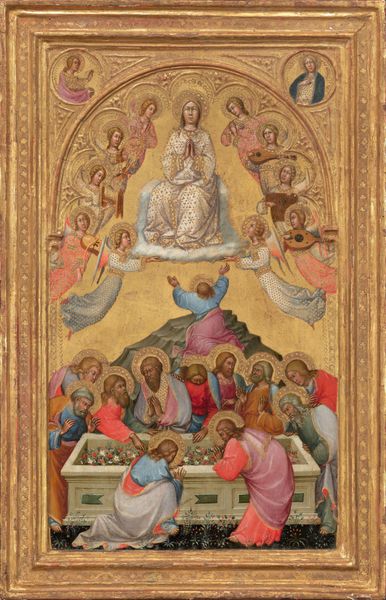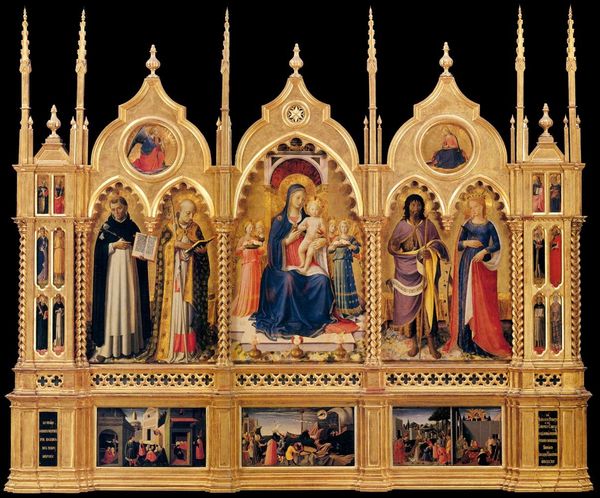
tempera, painting, gold
#
portrait
#
medieval
#
narrative-art
#
tempera
#
painting
#
gold
#
figuration
#
oil painting
#
history-painting
#
italian-renaissance
#
italy
Dimensions: 23 3/8 x 19 15/16 x 1 7/8 in. (59.42 x 50.64 x 4.76 cm)23 3/8 x 10 x 1 7/8 in. (59.37 x 25.4 x 4.76 cm) (panel, center)18 11/16 x 5 x 7/8 in. (47.47 x 12.7 x 2.22 cm) (panel, right)18 9/16 x 4 15/16 x 7/8 in. (47.15 x 12.54 x 2.22 cm) (panel, left)
Copyright: Public Domain
Bernardo Daddi created this "Madonna and Child Enthroned with Saints" probably in the 14th century using tempera and gold leaf on wood. The work's visual impact resides in its architectural structure and rich gold background, which creates a hieratic, otherworldly atmosphere. The Madonna and Child are centrally placed, flanked by saints, forming a symmetrical composition, emphasizing stability and order. The gold ground flattens the space, typical of the medieval aesthetic, which prioritizes symbolic representation over naturalistic depth. The contrasting colours of the figures' robes—deep blues, reds, and yellows—against the gold, creates a visual hierarchy and draws the viewer's eye to key figures. Daddi's choice of materials, particularly the gold leaf, serves not only as decoration, but also to denote sacredness, reflecting the divine status of the figures depicted. The work functions as a signifier of religious authority and spiritual transcendence, employing a complex interplay of colour, line, and material to convey its message within the cultural and philosophical context of its time.
Comments
minneapolisinstituteofart almost 2 years ago
⋮
This small portable triptych was undoubtedly made for personal devotion. The enthroned Virgin and Child are accompanied by Saints Helena and Peter (left), and Saints Catherine of Alexandria and Paul (right). On the left wing is a scene of St. Francis of Assisi receiving the stigmata (the same wounds Christ suffered on the Cross); on the right wing is a scene of the Crucifixion, with the mourning Virgin and St. John the Evangelist. Bernardo Daddi was a close follower of Giotto, the artist who first fully expressed the sculptural solidity of the human form. He was also influenced by the Sienese school, evident here in his lyrical sense of line and the subtle tonal variation.
Join the conversation
Join millions of artists and users on Artera today and experience the ultimate creative platform.
